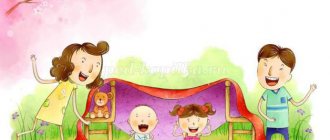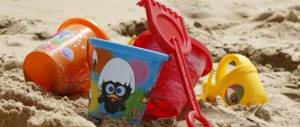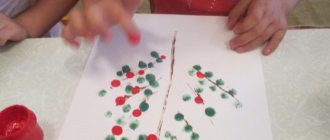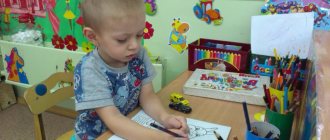What is creativity
By definition, this is the process of human creation of new unique material and spiritual values (products, things). Every person is unique. This means that everything he creates is unique and inimitable.
Let me give two examples for clarity.
A) We, being in the same room, see in front of us what seems to be the same view from the window, but if we are asked to draw what we see, each of us will draw his own picture, highlighting and focusing attention on different fragments of what he saw and painting the picture in your own colors.
B) We know what, for example, a butterfly looks like, but each of us, making it in the form of a craft, even having the same pattern, will create our own unique butterfly, choosing different materials for the craft and a different color combination.
Do you know how the creative process itself occurs ? Now I will tell you about everything in order.
In the process of studying and understanding the world around you, you have an idea to create or do something like that. Perhaps this is not your idea, but an idea suggested to you by adults, but you liked it and you want to implement it. So, first the idea for creativity arose. What's next?
Now you need to determine what you need in order to bring this idea to life. For example, to draw a regular picture you need an album or drawing paper, paints, felt-tip pens or pencils. That is, we prepare the means to implement a creative idea. And then it’s up to your fantasy, imagination and skill (skill).
And finally, after bringing your creative idea to life, you need to evaluate the result of your creativity. First, you need to understand whether, first of all, you like this result and whether you have a desire to continue to create something in this direction. Then you can find out the opinions of others. Keep in mind that the opinions of others may not coincide with your feelings and impressions of what you have created (history knows many cases when geniuses were not recognized).
But the main thing in creativity is the desire to create, the desire to create something new, unusual and through creativity to give love and kindness to the people around you.
Worlds for dolls and animals
Creative work for children is not only an opportunity to express themselves. This is a chance to create your own world, where the child will spend a lot of time with his friends from fairy tales and games. That’s why various homes for dolls and animals have always been popular. Nowadays, retail chains offer a large selection of them, but you can also create real masterpieces at home.
Grandma's village
This game can last for several years. The parts in it can be painlessly replaced, and the field itself can be expanded indefinitely. New stories - at least every day.
The original village itself is being built quickly:
- Roughly cover a cardboard box with low sides with paper or old wallpaper.
- If there is supposed to be a river or lake in the village, then you need to cut out shapes for them. They should be covered with blue cardboard at the bottom of the box.
- From tetra packs, cut out blanks for barns, stables, cowsheds, chicken coops, and wells and paint them, marking window and door openings. Using the same principles, make the house itself.
- Glue a water tower together from a couple of toilet paper rolls and cover it with a roof.
- Cut out trees from cardboard and paint on both sides.
- Make grass from green paper. To do this, cut it into thin strips, fold each in half, wave it with small scissors on top, and glue it on the bottom.
- Fill the garden with different crops. Cabbage can be made from lumps of colored cotton wool. Corn - from halves of hygiene sticks (paint the tops yellow).
With the help of plasticine, a village can be populated with pigs, chickens, cows, and ducks. Matchboxes and buttons will become material for the tractor. The main thing is that both buildings and animals are easy to add at any time.
Apartment for my beloved girlfriend
Your favorite doll needs her home. You can make it from a box of strong cardboard of a suitable size. Inside, the apartment is decorated to match the character of a princess, mermaid, or any other character.
Working on an apartment is both simple and interesting:
- Cut the short sides diagonally, tapering upward. Trim the top along the edge.
- Tape the outer ribs with tape to prevent fraying.
- Cover the box with white paper. Design applications or make background pictures.
- You can paste wallpaper on the inside. They should be different on the floor, walls, ceiling.
- Cut or draw windows.
- Place a crib, table, and chairs in the room. All this can be done with your own hands. Glue a small mirror to the wall.
- Throw a housewarming party for your friend with a tea party. Dishes for it, cake and pastries can be made from plasticine.
This game is also from the eternal series. The child himself will be interested in updating the doll's apartment. An adult can help him at any stage - for example, bring light into the house by making a diode chandelier or stringing out a garland.
Having acquired some skill, you can make any worlds: a parking lot, a fire station, a police station - there will be enough space in the apartment.
Children's creativity and its main types
Children's creativity, in principle, is no different from the creativity of an “adult”. Except that it is created by children, and as you know, children have more developed imagination and imagination compared to adults.
Children perceive the world around them somewhat differently, which makes their creativity especially attractive. Children have no fear of creating, they are open to the world, with childlike spontaneity, delight and purity of dreams, they absorb all its manifestations, rejoicing at every new, even tiny, discovery for themselves.
Children's creativity can be divided into three main types: artistic, technical and musical. Although, as you understand, there are children who make discoveries (this is scientific creativity) and teach their peers new knowledge (this is pedagogical creativity), thus engaging in “adult” types of creativity.
Children's artistic creativity
these are: - drawing using a variety of drawing tools, - sculpting crafts from clay and plasticine, - creating artistic compositions, crafts and applications from various natural and artificial materials, - embroidery, - creating literary and musical works (poems, fairy tales, stories, songs, music).
Technical children's creativity
involves the design and modeling of various devices, models, mechanisms (for example, ships, various aircraft, toys, origami, kaleidoscopes...)
Musical children's creativity
represented by playing various musical instruments, singing, dancing and rhythm.
In each of these types of children's creativity, you can choose an activity to your liking, fully demonstrating your creative abilities.
Interesting crafts made from natural materials
The use of natural materials provides a good basis for creative activities with children. It is important that you can prepare cones, twigs, dried leaves, acorns, bark and roots yourself, which is much more economical than purchasing consumables in stores. Crafts made from them look picturesque and original.
Bouquet in a vase
A bright piece can be created from pine cones and branches of any tree. In addition, you will need paints, colored paper, scissors, glue (it is better to use “Moment” or a glue gun). You can take a real vase or use a paper or plastic cup.
Operating procedure:
- Cover the table with oilcloth or newspaper.
- Clean the cones from dust. There is no need to wash them, just blow them off.
- Cut out leaves from paper. Draw veins on them.
- If you use a glass under a vase, then it must be covered with paint or pasted over and decorated.
- Compare the branches with the depth of the vase, adjust them to size, and paint them green.
- Paint the cones pink, red, white, yellow. Fix them on the branches-stems. To be safe, before using glue, you can use an awl to screw small holes into the cones.
- Glue the leaves to the stems.
- Place the resulting roses in a vase.
If the vase is homemade, you can add sand and pebbles to the bottom for clearer fixation and balance. A pot of flowers of a smaller size and a different color will look good nearby. You can use an old CD as a stand. It must first be painted or pasted over.
Subject herbarium applications
Collecting a herbarium has been a well-known activity for a long time. But it’s easy to give this idea a new sound. Moreover, the variety of colors and shapes of leaves gives a good impetus to imagination. A herbarium applique with butterflies or birds will look beautiful on the wall in a children's room. Such paintings will easily fit into the interior of any children's room, regardless of its size.
Work on such a herbarium is carried out as follows:
- Collect leaves, clean from dirt.
- Separate by color, size, type.
- Place between the pages of an old magazine and place under a press (you can iron it through the paper with an iron).
- Next, glue the leaves onto whatman paper, leaving large gaps between them.
- Based on the shape of the leaves, something is drawn on them with pencils, paints or glued (wings, legs, heads made of plasticine, colored paper). You get flowers, butterflies, little animals.
If you keep an idea in your head in advance, then a piece of whatman paper can be turned into a real painting. This produces quite high-quality landscapes. In another option, you can make a collection of butterflies from a herbarium. For this purpose, the leaves are decorated with various patterns.
Children enjoy being creative using natural materials. This develops imagination, fine motor skills, and gives unforgettable minutes of communication with other family members.
How to determine your creative abilities
A creative person can be called anyone who uses unusual approaches to creating something new or transforming something that has long been known to everyone.
The creative process involves our imagination, our perception of the world around us and skill, which is acquired and accumulated gradually. And another important fact: a creative person certainly puts soul and love into his creations.
Creativity is a gift given to a person from above, but this gift can be lost if it is not identified and developed in time. How can you determine what creative abilities you have?
Of course, I’m not a big expert in recognizing creativity in people, but I’m sure that you can do this on your own if you listen carefully to yourself and your desires.
Think about what you like to do most: draw, create crafts, dance, play some musical instrument, sing, take photographs, or something else? Each of us can have many such activities to our liking, and this is great, because we must be diversified individuals. But too much is not always good. You may simply not see the main thing!
Therefore, try to choose two or three from the many activities that you like. Those from which you get the most positive emotions and which you most often prefer to do in your free time.
Well, and finally, try to understand (if it doesn’t work out, ask adults or friends for help) which of the chosen ones works best for you. Although, as I said above, the main thing is your feeling and perception of the type of creativity you have chosen. Not everyone can be a genius, but everyone can do what they love!
This will be your creative note, the creative ability that needs to be developed.
You are still at the beginning of your creative path, many creative endeavors, successes and creative “failures” await you, but as a truly creative person, never give up what you love, don’t give up, believe in miracles and love what you do! And then you will succeed!
On our website and in our magazine in the Creativity section you will find master classes on making a variety of crafts, postcards, appliques from various materials, coloring books for children, as well as other interesting materials.
Later we will talk to you about how to develop your creative abilities.
- Attempt at writing. Part one.
- Travel Drops of gasoline or something...
- Devout Predator
- Lonely Witch
- Children's artistic creativity
- Nose eater
Tags: Author Laura
« Previous entry







